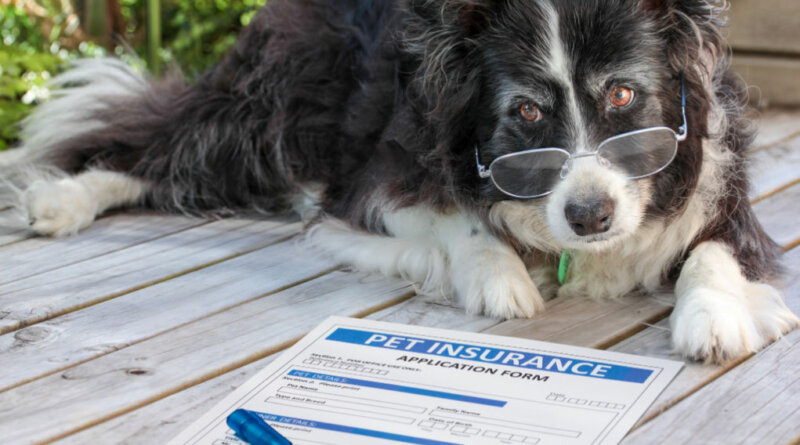Does Pet Insurance Cover Surgery? – Top Dog Tips
DOES PET INSURANCE COVER SURGERY?
This may be one of the commonly asked questions of pet owners with beloved canines or felines who are about to need one.
Because let’s face it: surgeries, whether for humans or animals, are quite expensive.
In 2021, the estimated annual expense for surgical veterinary procedures alone for domestic pets is between $201 to $458—not including routine visits or any other necessities.
And unless you have extra hundreds of bucks every year, the best way to cushion any financial effect of getting pet surgery is thru health insurance.
Good thing, most pet insurance does cover surgeries if they’re recommended by the experts to treat eligible accidents, injuries, or illnesses. But the other question is: how much?
In this article, let’s discuss what kinds of surgery are covered, how much pet insurance covers, and what are the best pet insurances you can consider for your furry friend.
How Does Pet Insurance Cover Surgery?
In 2021, about 3.9 million American pets have already been insured which is about 28% higher than in 2020. 82% of that insurance coverage is for dogs while 18% is for cats.
Pet insurance is a healthcare policy you purchase for your pet to cover the expenses of any medical treatment they may need in case of injuries or illnesses.
Medically necessary surgeries and emergency surgeries are mostly covered by pet insurance, but usually not those related to any pre-existing condition.
Pet insurance works much like health insurance for people, except that it reimburses any medical expenses directly to the pet owner instead of paying straight to the facility or the doctor or veterinarian.
This means you still need to pay out of pocket immediately after any covered procedure done to your pet before the pet insurance can step in.
Apart from the surgery costs, recovery period, and anesthesia, medications for post-op recovery can sometimes be covered too by the policy.
On the other hand, routine and preventative care may or may not be covered.
Often, it is considered elective, one that needs to be purchased as an added benefit to the pet insurance.
Types of Pet Insurance
Before actually signing up for one, you have to make sure that what you’re getting is fit for your dog’s needs.
After all, you’re going to have to pay a monthly premium for it!
There are 2 main types of pet insurance: accident-only pet insurance and comprehensive pet insurance.
Accident-only Pet Insurance
As the name suggests, accident-only pet insurance reimburses only part of the cost of any accident-related and emergency care for your pet.
It usually does not cover any breed-specific health problems, illness, or even the cost of regular veterinary care.
It also does not cover pre-existing conditions your pet may have prior to purchasing the insurance.
The most common incidents that can be covered by this type of insurance are car accidents, snake bites, poisoning, broken bone caused by a fall, burns, etc.
Comprehensive Pet Insurance
On the other hand, comprehensive pet insurance covers not only accident-related injuries but also any chronic illnesses or diseases your pet may have.
Depending on the insurance company, they can also cover diagnostic exam fees, treatments, and any ongoing care.
This may easily be the highest level of protection you can get for your pet, as it can cover up to 85% of eligible vet bills.
RELATED: Dog Health Insurance: Do You Really Need It?
What Surgeries Do Pet Insurances Mostly Cover?
Any surgery that’s deemed medically necessary for your dog or cat can mostly be covered by their pet insurance, especially if they are required to save your pet’s life.
The most common procedures that pets usually require are the following:
Eye Surgery
Certain breeds of dogs and cats are susceptible to getting eye diseases.
Cataracts, glaucoma, cherry eyes, and sometimes, even injuries that can cause the need to remove an eye.
Eye removal or enucleation typically costs $200 to $1,000. But as long as it’s deemed medically necessary and wasn’t pre-existing, it will surely be covered by your pet’s insurance.
Joint Surgery
Problems with the joint are also common for dogs and cats such as hip dysplasia, arthritis, and luxating patella. This is especially true for elderly pets.
Surgeries and therapies are also usually the prescribed treatment to cure them which can range from $100 to $3,000.
To some extent, a total hip replacement may be considered but can set you back $3,500 to $7,000.
However, if your dog’s breed is genetically predisposed to getting joint diseases, their diagnosis and treatment may not be covered.
Emergency Surgery
Immediate surgeries caused by any accidents will also be covered by your pet’s insurance.
Common examples of emergency surgery are the removal of foreign bodies, incisions of abscesses, and surgeries to treat trauma, among others.
The amount that insurance will cover will depend on the complexity of the surgery to be done.
Exploratory Surgery
Sometimes, surgeries need to be done to investigate or diagnose any possible condition that can’t be seen with a non-invasive procedure.
Most of the time, it’s needed to diagnose any internal complications caused by trauma.
Some pet insurance covers exploratory surgery while others do not.
It’s best to check this with the insurance broker or read your pet’s policy carefully to know whether it’s covered or not.
Other Common Surgeries Covered by Pet Insurance:
- Soft Palate Resection/ BOAS Correction Procedure that’s medically necessary, especially for Brachycephalic dog breeds.
- Hernia surgery.
- ACL surgery, although some pet insurance has limitations or exclusions for this.
- Cancer treatments like tumor removal, especially under Comprehensive Pet Insurance.
- Limb amputation may be covered by the insurance if the cause is not due to a pre-existing condition.
- Comprehensive plans may cover dental services like surgery but some insurance offers this as an elective procedure instead.
Which Procedures Are Not Covered?
Depending on the type of insurance you get for your pet, there could be, of course, limitations to its coverage.
Pre-existing Conditions
Any illnesses that your pet has prior to purchasing the health policy, called pre-existing conditions, are mostly not covered by insurance.
However, there are some that can consider covering them under certain conditions.
Some “curable” pre-existing conditions such as infections, diarrhea, vomiting, etc. can actually be covered.
But the persistent or “incurable” ones like allergies, heart diseases, cancers, and such won’t be.
To help you with the cost, you can instead set up a financing option with your veterinarian.
Elective Surgeries and Cosmetic Procedures
Spaying and neutering, although a common procedure for dogs and cats, are actually not covered by many pet insurance policies as this is considered elective surgery.
Good thing that spaying and neutering don’t cost as much as other medically necessary surgeries.
A cosmetic procedure, on the other hand, involves surgeries mostly for aesthetic purposes.
Examples of this are wrinkle removal, tail docking, ear trimming, declawing, debarking, and even hair dying.
Cesarian Section
Some insurance policy doesn’t cover pregnancy-related complications but there are others that offer breeding coverage.
However, since most policies are customizable, emergency C-sections can be covered to a certain extent.
Planned C-sections, on the other hand, will mostly not be covered especially if not deemed medically necessary.
RELATED: 18 Ways to Save Money on Dog Care, Health, Vet Bills, and Medicine
How Much Does Pet Insurance Covers Surgery?
As mentioned above, pet insurance policies work by reimbursing the surgery costs straight to the owner instead of the veterinarian or the facility.
This means if your dog or cat’s surgery costs $3,000, you’re going to have to pay for it first.
Once the procedure’s done and you got all the necessary documents, you can then start the reimbursement process.
Depending on the coverage, you can get back as much as 90% of what you initially paid.
Remember that each pet insurance has its own set of maximum amounts payable per procedure, so you got to check your pet’s policy for this.
To give you a general idea, Pet’s Best Pet Health Insurance provides average coverage for certain procedures on its website for dogs and cats.
Cataract surgeries can be covered from $196 to $555; Hip dysplasia from $494 to $1,677; Hernia from $356 to $4,192, etc.
How Much Does Pet Insurance Cost?
The amount you’ll have to pay for the monthly premium depends on the type of policy you’ll get for your pet.
Typically, accident-only insurance will cost less than a comprehensive one where both accidents and illnesses are covered.
On top of that, you’ll have the option to add riders for more benefits such as wellness procedures or elective surgeries (which will cost additional fees, of course.)
On average, the annual premium pet owners pay for their dogs is about $584, or $49 per month.
Cat owners, on the other hand, pay about $343 per year or $29 per month, according to the North American Pet Health Insurance Association.
What Pet Insurance Covers Surgery?
Most pet insurance policies in America cover surgery—the difference is what kinds of surgery and how much do they cover it for.
Forbes listed down the best pet health insurance plans in the country for 2022.
We’ve also included the links you can click to check each insurance’s covered services.
- Embrace – Best For Superior Benefits
- Pets Best – Great For Choices Of Deductible
- ManyPets – Best For Lowest Out-Of-Pocket Claims Costs
- Figo – Great For Short Waiting Period For Accident Coverage
- Lemonade – Best Price For Kittens And Puppies
- Spot – Best For Annual Coverage Choices
- ASPCA – Great For No Waiting Period For Special Conditions
- Nationwide – Best For Unlimited Wellness Coverage
- Prudent Pet – Great For Extras
- TrustedPals – Great For Service Dogs
How to Get Pet Insurance
With so many options, it’s easy to get pet insurance nowadays. In fact, it’s just easy as clicking the links above!
STEP #1 – Get a quote
Whether you want to get things done online or you’d rather speak to an insurance agent or broker, the first thing you can do is get a free quote.
This quotation will depend on whether your pet is a dog or a cat, its breed, and your location.
The possible cost of coverage will also depend on the deductible you choose
STEP #2 – Choose the best coverage for your pet
While budget is an important factor to consider in choosing a plan, it’s also important to consider the possible services your pet will be needing.
Of course, you’d want your pet to get what you’re paying for!
Compare the prices, the coverages, and the extra features that every insurance is offering.
From here, pick what you think fits the most to your dog’s needs.
STEP #3 – Pay for the premium
You can pay for your chosen insurance policy on a monthly, quarterly, or even yearly basis.
It is often renewed automatically and auto-debited on your card or bank.
STEP #4 – Wait for the waiting period
As most insurance have, there is a prescribed waiting period from the time of your purchase to the time that the coverage will actually be in effect.
Typically, accident-related coverage starts 36 to 48 hours after enrollment.
On the other hand, coverage for different illnesses has 14 to 21 days waiting time.
STEP #5 – Your pet is insured!
After completing all 4 steps above, you can now rest assured that your dog or cat has a safety net if and when an unfortunate incident happens.
Does Pet Insurance Cover Surgery — Final Thoughts
There’s no doubt about the importance of being prepared in case of the unexpected and the unimaginable.
And what best way to prepare than having even your pet insured?
So the question “does pet insurance cover surgery” sure is a valid concern for most pet owners. And don’t worry, you’re not the only one asking it.
We hope this article helped you figure out what insurance can best cover your pet’s surgery and how much pet insurance covers surgeries.
Just remember that it’s always better to be prepared than to be sorry in the end!
READ NEXT: How to Afford an Expensive Pet Surgery
Related









